
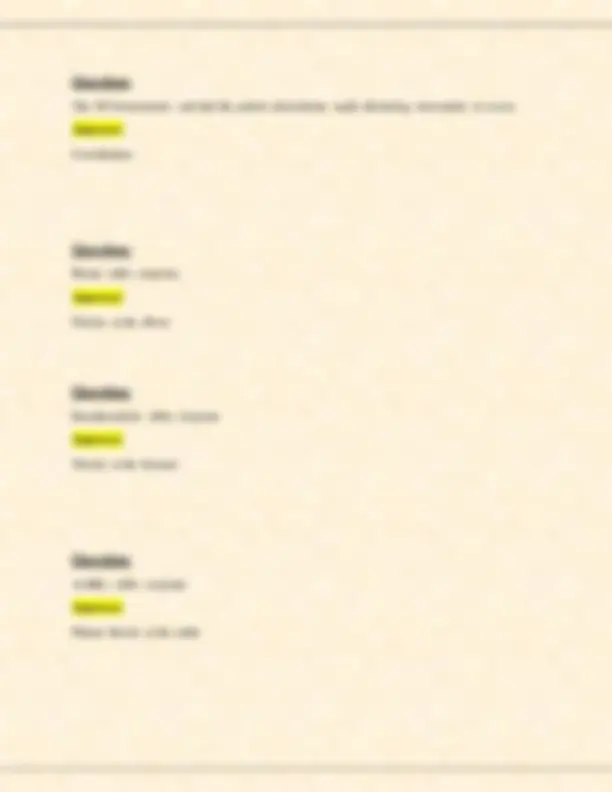
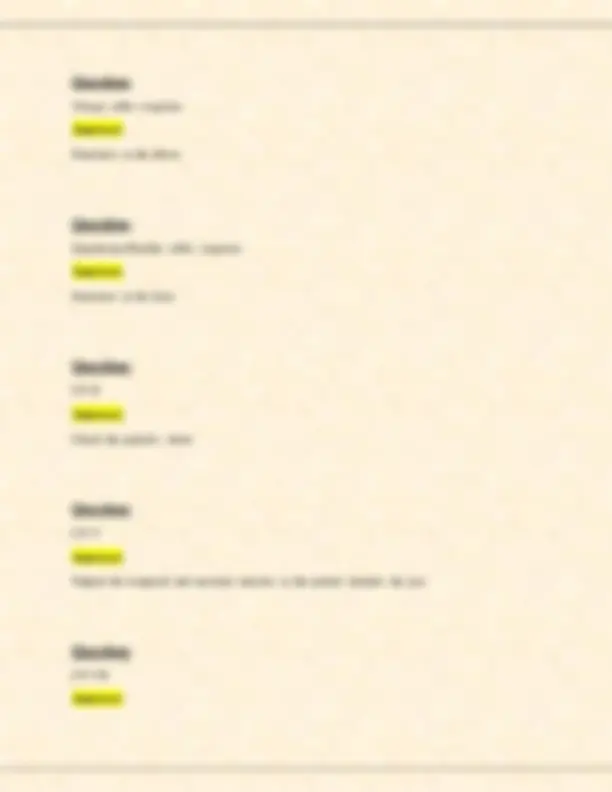
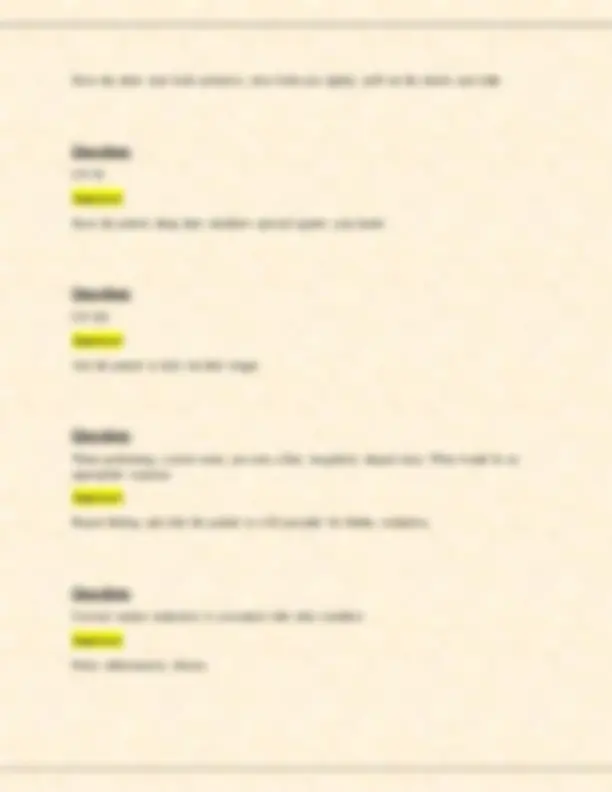
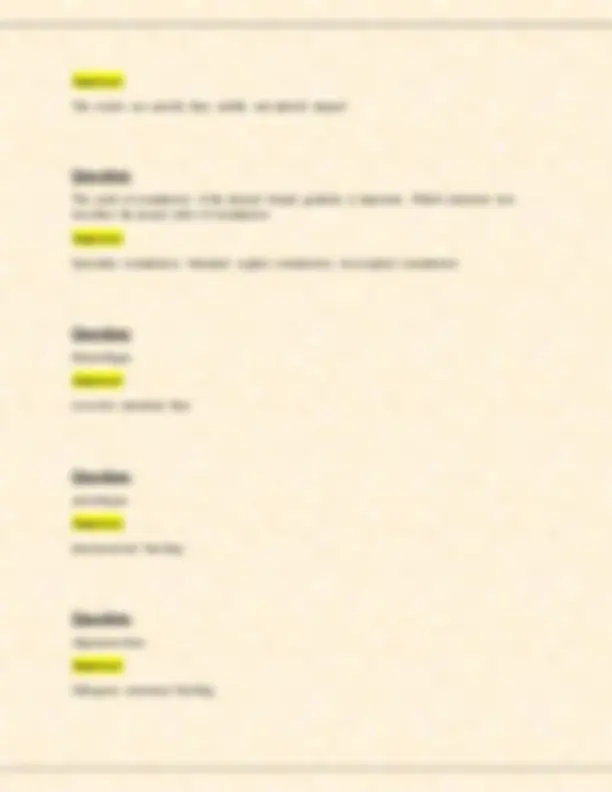
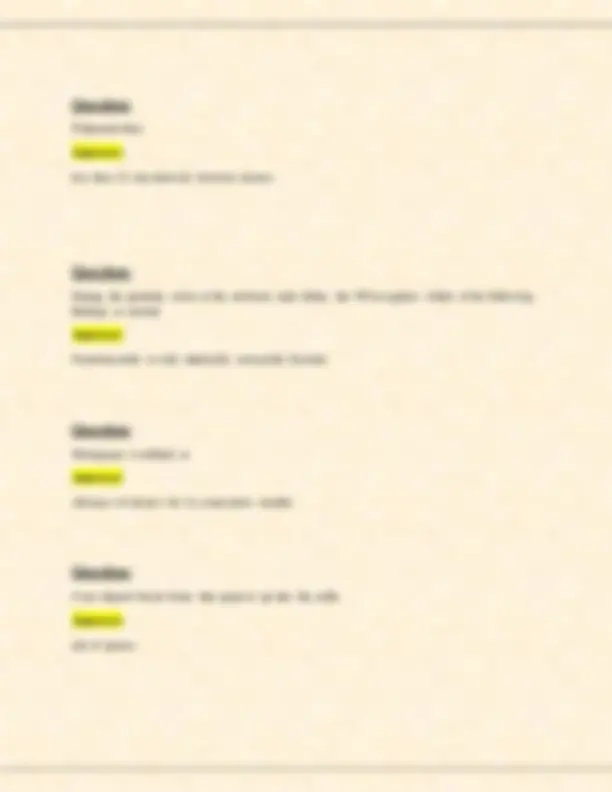
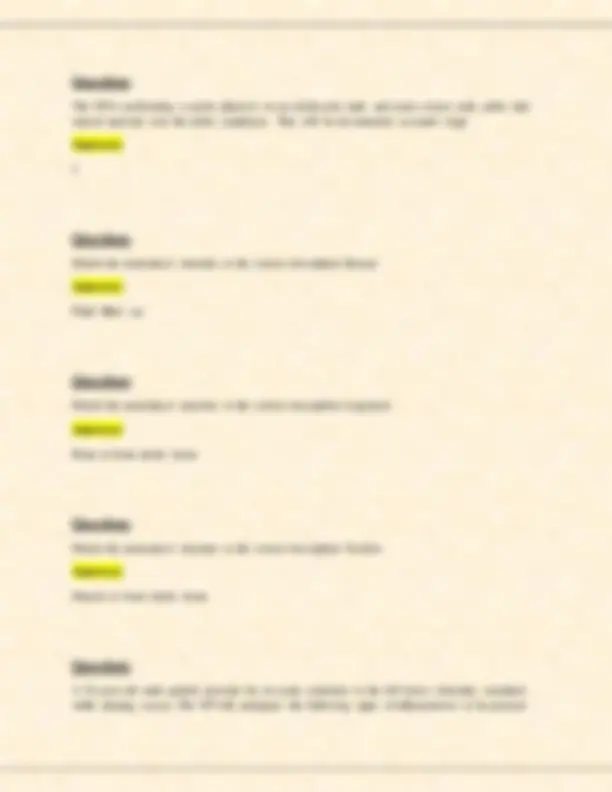
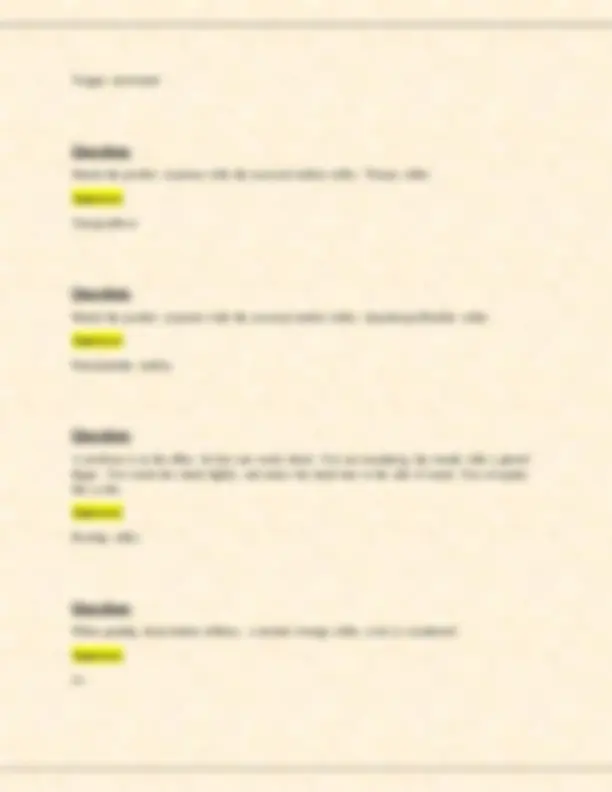
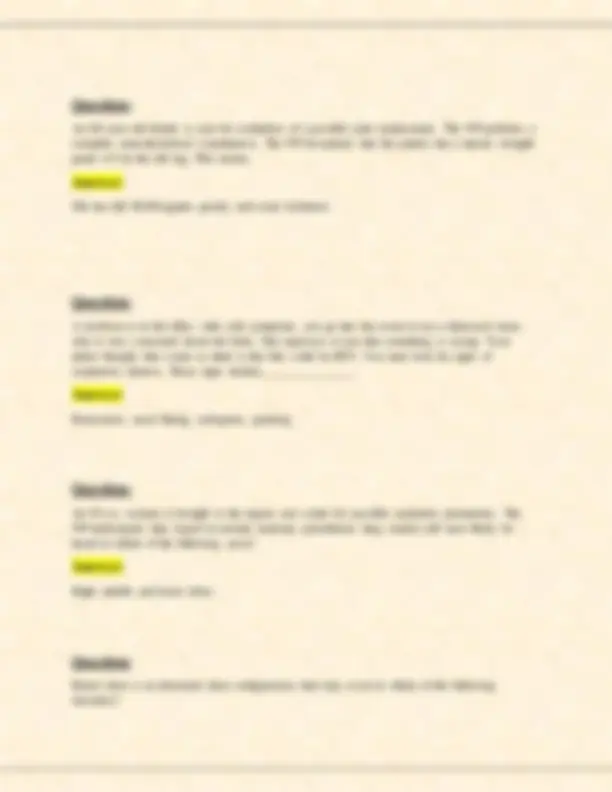
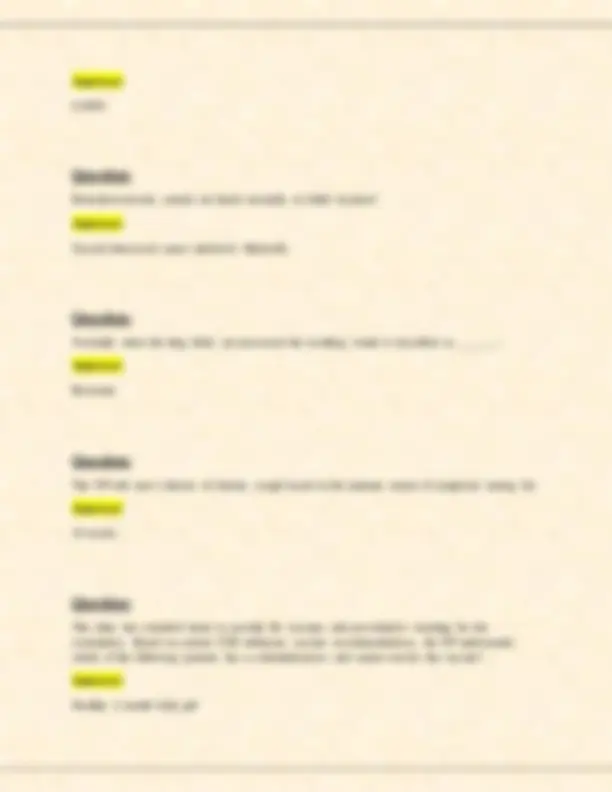
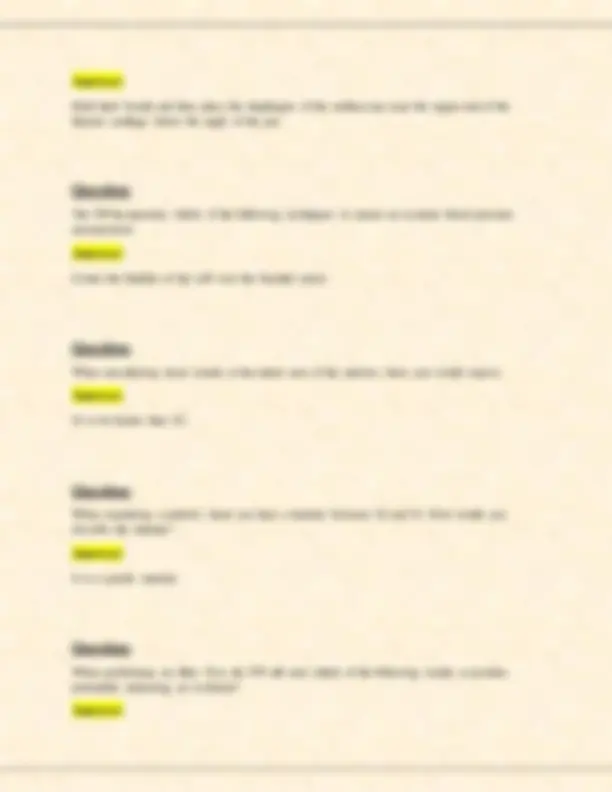
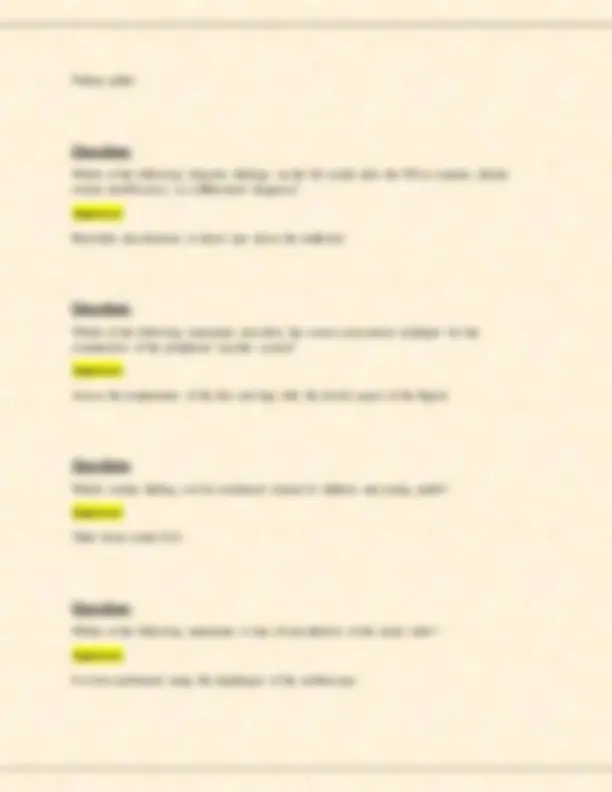
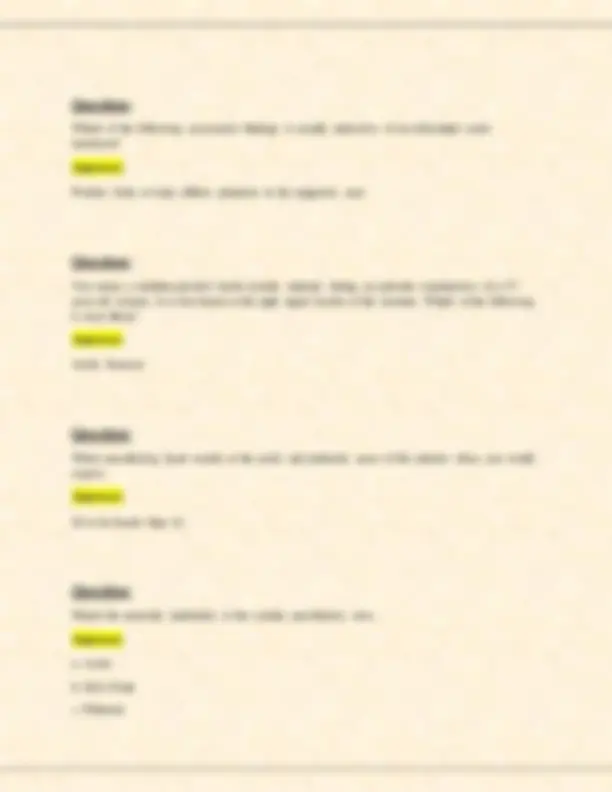
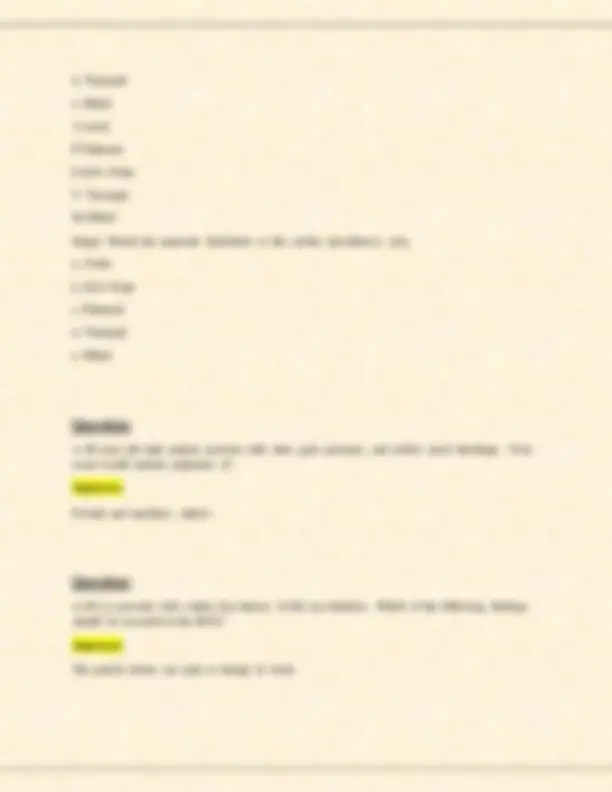
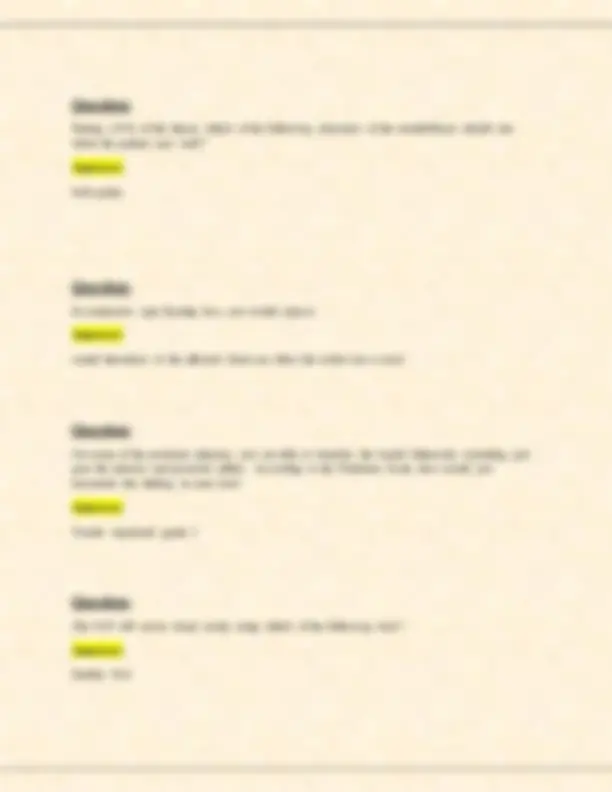
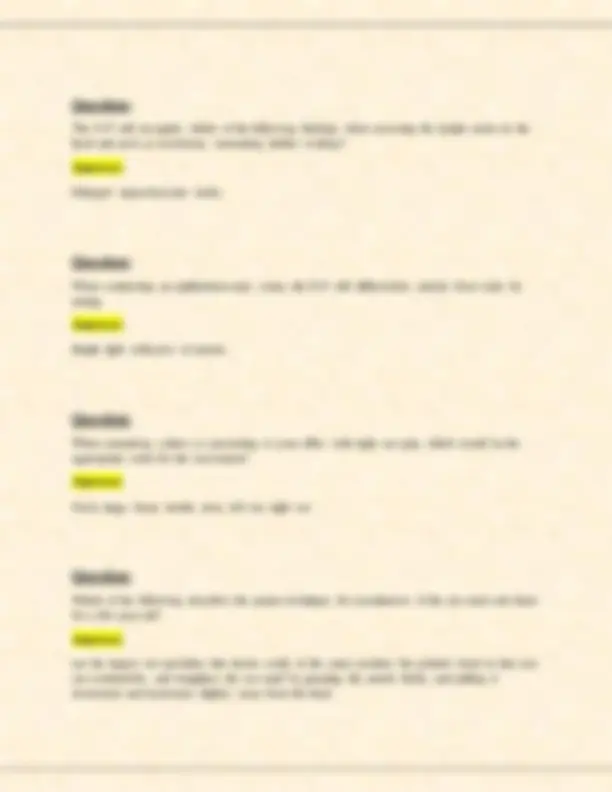
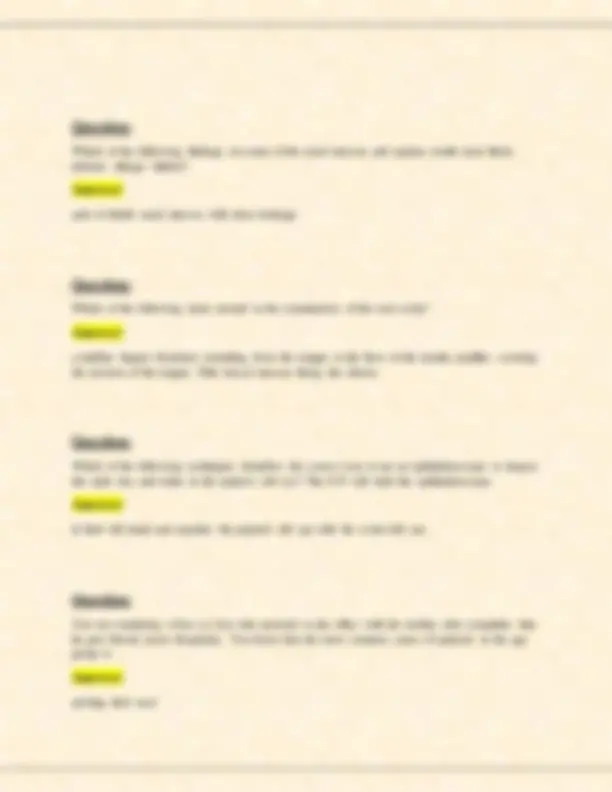
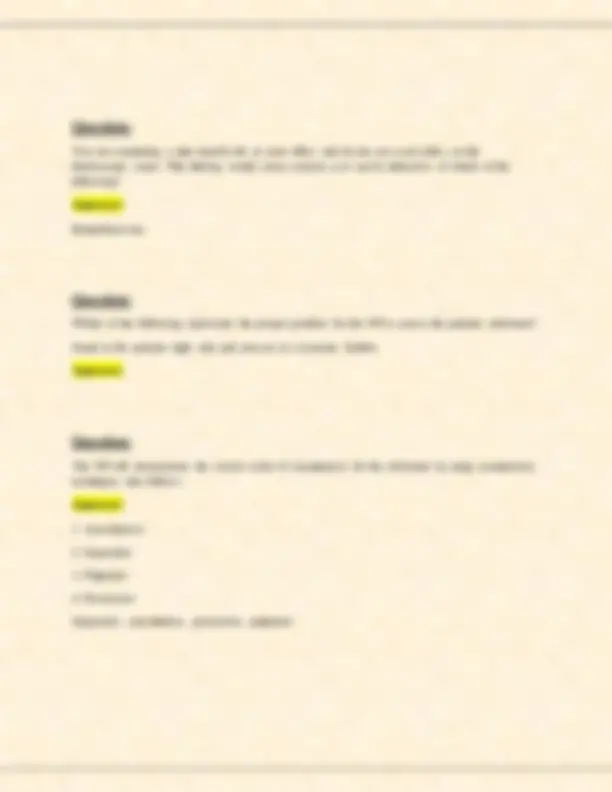


Study with the several resources on Docsity

Earn points by helping other students or get them with a premium plan


Prepare for your exams
Study with the several resources on Docsity

Earn points to download
Earn points by helping other students or get them with a premium plan
Community
Ask the community for help and clear up your study doubts
Discover the best universities in your country according to Docsity users
Free resources
Download our free guides on studying techniques, anxiety management strategies, and thesis advice from Docsity tutors
NU 650/ NU650 Final Exam | Health Assessment (Latest 2025/ 2026 Update) | Questions and Verified Answers | 100 out of 100 | GRADED A | 100% Correct – Regis
Typology: Exams
1 / 25

This page cannot be seen from the preview
Don't miss anything!


















You place a quarter in your client's hand and ask him to identify it without looking. You are testing which discriminative sensation?
Stereognosis
Which of the following neurological tests assess the sensory system?
Vibration and position
When you ask a 68 year old patient to stand with his feet together and arms at his sides with eyes closed, he starts to sway and moves his feet further apart and stumbles. You would document this as
Positive Romberg's sign
Which of the following responses would the NP recognize as worrisome?
Dorsiflexion of the great toe when eliciting a plantar response
The NP examines a 6 month old infant girl for a well child visit. The presence of which of the following reflexes will be noted as normal?
Landau reflex or parachute reflex are both correct
The NP uses the get up and go (TUG) test to evaluate mobility of a 75 year old male patient. The expectation is that the patient should be able to complete this in
10 seconds
A patient reports problems with balance. On physical exam you notice an unsteady gait. This most likely represents a disturbance in
Cerebellum function
Triceps reflex response
Extension at the elbow
Quadriceps/Patellar reflex response
Extension at the knee
Check the patient's vision
Palpate the temporal and masseter muscles as the patient clenches his jaw
Have the client raise both eyebrows, close both eyes tightly, puff out his cheeks and smile
Have the patient shrug their shoulders upward against your hands
Ask the patient to stick out their tongue
When performing a rectal exam, you note a firm, irregularly shaped mass. What would be an appropriate response
Report finding and refer the patient to a GI specialist for further evaluation
Cervical motion tenderness is associated with what condition
Pelvic inflammatory disease
It is heart shaped with a palpable groove, it's surface is smooth, it has an elastic rubbery consistency
When performing an exam on a 47 year old man you notice swelling around the inguinal ring alongside the pubic hair that is not painful and reduces without difficulty in the supine position. This finding is most consistent with which of the following diagnoses
A direct inguinal hernia
Which of the following findings on palpation of the breast is most suggestive of cancer
Firm, nontender lump that is fixed to underlying tissue
The NP will assist a 6 year old female patient to which of the following positions to examine her genitalia
Supine, frog leg position
The nurse practitioner palpates a woman's ovaries. Which of the following represents a normal finding?
The ovaries are smooth, firm, mobile and almond shaped
The order of examination of the internal female genitalia is important. Which statement best describes the proper order of examination
Speculum examination, bimanual vaginal examination, rectovaginal examination
Menorrhagia
excessive menstrual flow
metorrhagia
intermenstrual bleeding
oligomenorrhea
Infrequent menstrual bleeding
The NP is performing a sports physical on an adolescent male and notes coarse curly pubic hair spread sparsely over the pubic symphysis. This will be documented as tanner stage
Match the anatomical structure to the correct description-Bursae
Fluid filled sac
Match the anatomical structure to the correct description-Ligament
Bone to bone elastic tissue
Match the anatomical structure to the correct description-Tendon
Muscle to bone elastic tissue
A 16 year-old male patient presents for an acute contusion to his left lower extremity sustained while playing soccer. The NP will anticipate the following signs of inflammation to be present:
All of the above
An 80-year-old female is seen for evaluation of a possible joint replacement. The NP performs a complete musculoskeletal examination. The NP asks the patient to move her right arm out to the side and away from her body. If performed correctly, the NP will document the patient was able to demonstrate which of the following movements?
Abduction
An 80-year-old female is seen for evaluation of a possible joint replacement. The NP performs a complete musculoskeletal examination. The NP asks the patient to move her head forward to touch her chin to her chest to check her range of motion. The movement she is performing is described as:
Flexion
An 80-year-old female is seen for evaluation of a possible joint replacement. The NP performs a complete musculoskeletal examination. The NP asks the patient to point her foot downward towards the floor. The NP will note the patients ability for:
Plantar flexion
Tongue movement
Match the positive response with the assessed tendon reflex: Triceps reflex
Triceps/elbow
Match the positive response with the assessed tendon reflex: Quadriceps/Patellar reflex
Knee/patellar tendon
A newborn is in the office for her one-week check. You are examining her mouth with a gloved finger. You touch her cheek lightly and notice her head turn to the side of touch. You recognize this as the:
Rooting reflex
When grading deep tendon reflexes, a normal average reflex score is considered:
An 80-year-old female is seen for evaluation of a possible joint replacement. The NP performs a complete musculoskeletal examination. The NP documents that her patient has a muscle strength grade of 4 in her left leg. This means:
She has full ROM against gravity and some resistance
A newborn is in the office with cold symptoms. you go into the room to see a distressed mom who is very concerned about her baby. She expresses to you that something is wrong. Your initial thought that comes to mind is that this could be RSV. You must look for signs of respiratory distress. Those signs include________________
Retractions, nasal flaring, tachypnea, grunting
An 85 y.o. woman is brought to the urgent care center for possible aspiration pneumonia. The NP understands that, based on normal anatomy adventitious lung sounds will most likely be heard in which of the following areas?
Right middle and lower lobes
Barrel chest is an abnormal chest configuration that may occur in which of the following disorders?
When compared to wheezes and rhonchi, the NP notes that on auscultation, crackles are:
Intermittent and discontinuous sounds
Which breath sound is normally heard over the sternal notch?
Bronchial
Which of the following findings will alert the NP to include pneumonia as a differential diagnosis?
Positive bronchophony
Which of the following is an expected change of aging?
There is a decrease of the elastic properties within lungs
In your assessment of a normal adult, where would you expect to palpate the apical impulse?
Fifth left intercostal space at the midclavicular line.
The NP will ask the patient to assume which position to assess for mitral stenosis?
Left lateral decubitus
The NP will ask the patient to assume which position to assess the patient for aortic regurgitation?
Sitting, leaning forward after full exhalation
The NP will document assessment of the radial pulse as normal by noting the following grade:
To assess the patient for a carotid bruit, the NP will first ask the patient to
Palmar pallor
Which of the following objective findings on the LE would alert the NP to consider chronic venous insufficiency as a differential diagnosis?
Brownish discoloration or ulcers just above the malleolus
Which of the following statements describes the correct assessment technique for the examination of the peripheral vascular system?
Assess the temperature of the feet and legs with the dorsal aspect of the fingers
Which cardiac finding can be considered normal in children and young adults?
Third heart sound (S3)
Which of the following statements is true of auscultation of the aortic valve?
It is best performed using the diaphragm of the stethoscope
Which of the following assessment findings is usually indicative of an abdominal aortic aneurysm?
Positive bruit or wide, diffuse pulsation in the epigastric area
You notice a medium-pitched harsh systolic murmur during an episodic examination of a 37- year-old woman. It is best heard at the right upper border of the sternum. Which of the following is most likely?
Aortic Stenosis
When auscultating heart sounds at the aortic and pulmonic areas of the anterior chest, you would expect:
S2 to be louder than S
Match the anatomic landmarks to the cardiac auscultatory area.
a. Aortic b. Erb's Point c. Pulmonic